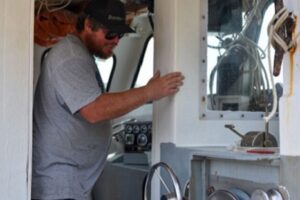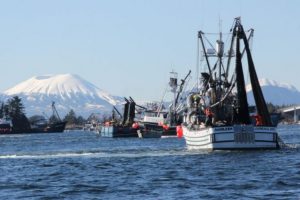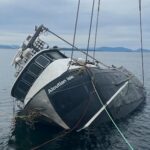Corexit 9500A and 9527A were sprayed in the Gulf during the Deepwater Horizon spill.
Corexit 9500A and 9527A were sprayed in the Gulf during the Deepwater Horizon spill. Corexit is a dispersant which breaks up oil into fine droplets and renders spilled rafts of it to sink out of sight. This solvent was originally developed by Exxon and is now manufactured by the Nalco Corporation of Naperville, Illinois which is owned by Goldman Sachs. Corexit is four times more toxic than oil in itself as a separate substance, oil is toxic at 11 ppm (parts per million), Corexit 9500 at only 2.61ppm.
This dispersant is banned in many parts of the world. Corexit is many times more toxic than crude oil by itself and when Corexit is used to hide oil, as it was during the Deepwater Horizon spill, the synergistic compound formed by Corexit and crude oil is even more devastating to the fish and mammals than either substance alone.
Depending on the extent of the research done and for the time frame that is used to project out its effects on the years to come, estimates range from between 11 to 52 as the multiplier for toxicity. That is to say that Corexit makes spilled oil 11 to 52 times MORE TOXIC than already toxic “untreated” oil. This is the tragic consequence of using this Corexit cover-up.
In 2001, the Exxon Valdez spill was still evident by finding crude beneath the sand after digging an 18″ hole in any of the beaches in the area. Researchers found oil on the beaches of Prince William Sound in 2001, twelve years after the Exxon Valdez spill, they said that the oil they found beneath the sand looked as fresh as if the spill was last week.
Also in 2001 NOAA scientists working at the Alaskan Auke Bay Research Station found that dissolved or exposed oil had a sublethal toxic effect on organisms at levels of concentration many hundreds of times lower than scientists previously thought. “Later research by other scientists showed that oil exposure could damage a fish’s heart and sometimes produced early death.” (Above Exxon Valdez information and quote from The Private Empire: Exxon Mobil and American Power, by Steve Coll, 2012)
Now this Exxon Valdez spill saw no Corexit dispersants, the damage to the beaches and the elevated mortality of the Pink Salmon fish stocks some twelve years after the spill resulted from the 240,000 or so barrels (or estimates range from 11million gallons – 13million Gallons) of leaked crude after the Exxon Valdez ran aground; but no Corexit. The Deepwater Horizon Spill is conservatively estimated at 210 million gallons or 4.9 million barrels of oil and 2million Gallons of Corexit (that they will admit to).
Salmon that have returned to Prince William Sound (Valdez) have some serious deformities.
As usual, the defenses employed by the Oil Barons are nothing but a series of lies.
References:
http://fishery.about.com/b/2012/12/18/dispersant-suit-dismissed.htm?nl=1
http://crooksandliars.com/susie-madrak/study-corexit-made-gulf-oil-spill-52-
http://www.livescience.com/25159-oil-dispersant-increases-toxicity.html
http://www.truthdig.com/report/item/25_years_after_exxon_valdez_the_hidden_culprit_was_bp_20140323?fb_action_ids=722125367817873&fb_action_types=og.likes&fb_ref=.UzDISbOZEiE.like&fb_source=aggregation&fb_aggregation_id=288381481237582













































